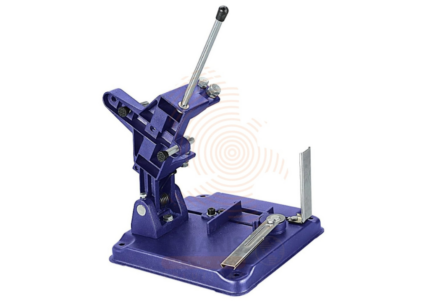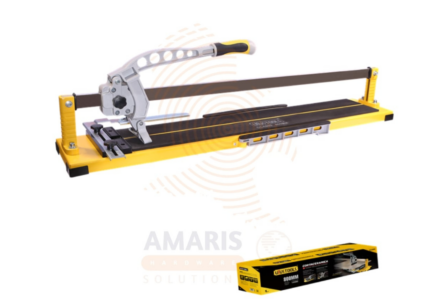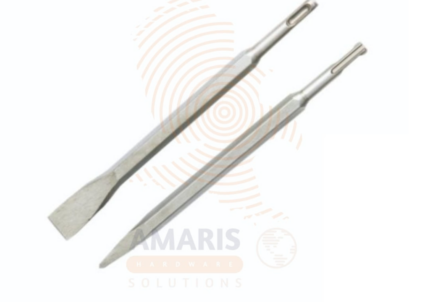
Tool Box
$34.58 Original price was: $34.58.$32.85Current price is: $32.85.

Tools Chest Set
$149.62 Original price was: $149.62.$142.14Current price is: $142.14.
Tools Bag
$21.15 Original price was: $21.15.$20.09Current price is: $20.09.
WhatsApp Order
A tools bag, often referred to as a tool bag or toolbox, is a portable container designed to organize, carry, and store various tools and equipment used for maintenance, repair, or other manual tasks. It typically features compartments, pockets, and dividers to keep tools organized and easily accessible, making it convenient for professionals such as mechanics, electricians, plumbers, or anyone else who regularly uses a variety of tools in their work. A tools bag is an essential accessory for efficient and mobile tool management in various trades and industries.
Description
Table of Contents
ToggleTools Bag
Uses
-
Construction and Carpentry:
-
Carrying essential hand tools like hammers, saws, screwdrivers, measuring tapes, and utility knives to construction sites.
-
Organizing specialized tools such as levels, chisels, and pliers.
-
-
Mechanical and Automotive Work:
-
Transporting wrenches, socket sets, pliers, and screwdrivers for vehicle maintenance and repairs.
-
Keeping diagnostic tools, lubricants, and other automotive accessories in one place.
-
-
Electrical Work:
-
Carrying wire strippers, crimpers, mustimeters, and various electrical tools for installation and repairs.
-
Organizing a range of connectors, terminals, and spare parts.
-
-
Plumbing:
-
Transporting pipe wrenches, pliers, adjustable wrenches, and pipe cutters.
-
Storing pipe fittings, sealants, and other plumbing supplies.
-
-
Home Maintenance:
-
Holding a selection of general-purpose tools for household repairs and maintenance.
-
Keeping a flashlight, tape measure, and other essentials for quick fixes.
-
-
HVAC (Heating, Ventilation, and Air Conditioning):
-
Carrying tools like duct tape, wrenches, thermometers, and gauges for HVAC system maintenance.
-
Organizing parts and accessories needed for heating and cooling equipment.
-
-
Computer and Electronics Repair:
-
Transporting precision screwdrivers, pliers, anti-static tools, and cable testers for electronics repair.
-
Keeping various connectors, adapters, and small components organized.
-
-
Emergency Repairs:
-
Serving as an emergency toolkit for quick fixes and repairs at home or on the go.
-
Including a variety of tools that can address common issues without the need for a fully equipped workshop.
-
-
Cable and Wiring Installation:
-
Carrying cable cutters, crimping tools, and cable testers for networking or audio-visual installations.
-
Organizing cables, connectors, and adapters for efficient installation work.
-
-
General Handyman Work:
-
Providing a comprehensive set of tools for individuals involved in a range of tasks, from hanging pictures to assembling furniture.
-
Offering a convenient and organized way to carry a variety of tools for diverse projects.
-
SAFETY HANDLING PRECAUTIONS
Safety Precautions
-
Proper Tool Selection:
-
Use the right tool for the job to avoid unnecessary strain or damage.
-
Ensure that tools are in good condition, with no loose or damaged parts.
-
-
Tool Bag Inspection:
-
Regularly inspect the tool bag for wear, tear, or damage.
-
Check zippers, handles, and seams to ensure they are in good condition.
-
-
Weight Distribution:
-
Distribute the weight of tools evenly within the tool bag to maintain balance and prevent strain on the bag and your body.
-
-
Carrying Safely:
-
Lift the tool bag using proper lifting techniques, bending at the knees rather than the waist.
-
Be aware of the weight of the bag and avoid overloading it beyond its capacity.
-
-
Secure Closure:
-
Ensure that the tool bag is securely closed or zipped to prevent tools from falling out during transportation.
-
This is especially important if the tool bag is carried on your shoulder or in a vehicle.
-
-
Avoid Running or Rushing:
-
Walk carefully when carrying a tool bag to prevent tripping or slipping.
-
Avoid running or moving hastily, especially in crowded or busy work environments.
-
-
Proper Storage:
-
Store the tool bag in a safe and dry location when not in use to prevent damage to both the bag and tools.
-
Keep it away from extreme temperatures and direct sunlight.
-
-
Tool Retrieval:
-
Be cautious when reaching into the tool bag to retrieve a tool, especially if the bag is full.
-
Watch for sharp or pointed tools to avoid accidental cuts or punctures.
-
-
Personal Protective Equipment (PPE):
-
Wear appropriate PPE, such as gloves and safety glasses, when handling tools to protect against potential hazards.
-
-
Tool Bag Placement:
-
Place the tool bag on a stable surface when accessing or organizing tools to prevent it from tipping over.
-
Avoid leaving the tool bag in walkways or other high-traffic areas to reduce the risk of accidents.
-
-
Regular Maintenance:
-
Clean and maintain tools regularly to ensure they function properly and remain in good condition.
-
Replace any damaged or worn tools promptly.
-
-
Emergency Preparedness:
-
Be familiar with the location of emergency exits and first aid kits in case of accidents or injuries.
-
Keep emergency contact information readily available.
-
Related products
Angle Grinder Stand
An angle grinder stand is a tool accessory designed to securely hold and stabilize an angle grinder in a fixed position. It typically consists of a sturdy base with a mounting mechanism that securely attaches the angle grinder, allowing it to be used as a stationary tool. The stand provides stability, precision, and safety, making it easier for the user to control the angle grinder during various cutting, grinding, or polishing tasks. This accessory is particularly useful for applications that require accuracy and consistent results, as it minimizes the risk of unintentional movement or errors while operating the angle grinder.
Heavy Duty – Tools Carrying Case
A "Heavy Duty Tools Carrying Case" refers to a collection or ensemble of robust and durable tools designed to withstand demanding tasks and challenging work conditions. This set typically includes a variety of high-quality hand tools, power tools, or a combination of both, specifically chosen for their strength, resilience, and ability to handle intense usage. The emphasis is on durability, sturdiness, and reliability, making the set suitable for professionals and enthusiasts engaged in heavy-duty tasks such as construction, automotive repair, or industrial maintenance. The goal is to provide users with a comprehensive selection of tools that can endure tough environments and consistently deliver optimal performance.
Plastic Tool Box
A plastic tool box is a portable storage container designed to organize, carry, and protect a variety of tools. Typically made of durable plastic materials, such as polypropylene or polyethylene, these tool boxes feature compartments, trays, and dividers to facilitate the orderly arrangement of tools, ensuring easy access and efficient storage. The sturdy construction of the plastic tool box provides durability and resistance to impact, while its lightweight nature makes it convenient for transportation. These tool boxes are commonly used by professionals and DIY enthusiasts alike, offering a practical solution for keeping tools organized and readily available in a compact and portable form.
Professional Manual Tile Cutter
A professional manual tile cutter is a specialized tool designed for accurately and cleanly cutting ceramic or porcelain tiles during the installation process. It typically consists of a sturdy base, a scoring wheel or blade, and a handle. The user places the tile on the cutter, scores a line on the surface of the tile using the cutting wheel, and then applies pressure to break the tile along the scored line. Professional manual tile cutters are known for their precision, efficiency, and the ability to produce clean and straight cuts, making them essential for professional tile installers and DIY enthusiasts working on tiling projects.
SDS Plus Stone Chisel Set
A SDS Plus Stone Chisel Set for hardware use typically refers to a set of two chisels designed for use with tools equipped with SDS-PLUS shanks. SDS-PLUS is a type of chuck system commonly used in rotary hammer drills, providing a secure and quick way to change drill bits and accessories. The stone chisels in this set are specifically crafted for working with hard materials like stone, concrete, or masonry. These chisels are essential tools for various hardware applications, including construction and renovation projects, where precise and efficient material removal is required. The set usually includes different sizes or shapes of chisels to accommodate various tasks and project requirements.
Steel Cutter
A steel cutter is a specialized hand tool or power tool designed for cutting steel bars, rods, sheets, or pipes with precision and ease. Available as manual bolt cutters or powered angle grinders with cutting discs, steel cutters provide clean cuts through hard metal materials. They are commonly used in construction, metal fabrication, manufacturing, and maintenance to cut rebar, steel cables, and other steel components.
Tile Cutter
A tile cutter is a manual or powered tool specifically designed for cutting ceramic, porcelain, or other types of tiles. It typically consists of a sharp cutting wheel or blade that is guided along a straight edge to score the tile's surface. After scoring, the tile is then snapped or separated along the scored line, resulting in a clean and precise cut. Tile cutters are widely used in construction, home improvement, and tiling projects to achieve accurate and customized tile sizes for various installations.
Tools Set
A tool set typically refers to a collection of 32 individual tools and accessories designed to assist in various tasks, repairs, or maintenance work. These sets often include a variety of hand tools such as wrenches, screwdrivers, pliers, sockets, and other essential tools needed for common mechanical or household projects. The specific tools included can vary, but the goal is to provide a comprehensive and versatile assortment for a range of applications. Such sets are convenient for individuals who want a compact and organized solution for basic tool needs without having to purchase each item separately.


 Acrylic Sealants
Acrylic Sealants Construction Adhesives
Construction Adhesives Double-Sided Tape
Double-Sided Tape Duct Tape
Duct Tape Electrical Tape
Electrical Tape Epoxy & Resins
Epoxy & Resins Masking Tape
Masking Tape
 Automotive Wrenches & Socket Sets
Automotive Wrenches & Socket Sets Battery Chargers & Jump Starters
Battery Chargers & Jump Starters Car Jacks & Stands
Car Jacks & Stands Car Wash & Detailing Products
Car Wash & Detailing Products Diagnostic Tools
Diagnostic Tools Tire Inflators
Tire Inflators Vehicle Lighting
Vehicle Lighting Oil & Lubricants
Oil & Lubricants
 Adhesives & Sealants
Adhesives & Sealants Bricks & Blocks
Bricks & Blocks Cement & Concrete
Cement & Concrete Drywall & Plaster
Drywall & Plaster Flooring (Tiles, Wood, Laminate)
Flooring (Tiles, Wood, Laminate) Lumber & Plywood
Lumber & Plywood Paints, Primers & Coatings
Paints, Primers & Coatings Insulation Materials
Insulation Materials Roofing Materials
Roofing Materials
 Circuit Breakers
Circuit Breakers Electrical Cables & Wires
Electrical Cables & Wires Switches & Sockets
Switches & Sockets Fuses & Relays
Fuses & Relays Connectors & Terminals
Connectors & Terminals Electrical Boxes & Panels
Electrical Boxes & Panels Conduit & Fittings
Conduit & Fittings Lighting Fixtures & Bulbs
Lighting Fixtures & Bulbs Extension Cords & Power Strips
Extension Cords & Power Strips
 Anchors
Anchors Bolts
Bolts Clips & Clamps
Clips & Clamps Screws
Screws Nuts
Nuts Washers
Washers Rivets
Rivets Nails
Nails Threaded Rods
Threaded Rods
 Hammers
Hammers Measuring Tools (Tapes, Levels, Calipers)
Measuring Tools (Tapes, Levels, Calipers) Screwdrivers
Screwdrivers Pliers & Cutters
Pliers & Cutters Saws & Blades
Saws & Blades Chisels & Punches
Chisels & Punches Allen Keys & Hex Keys
Allen Keys & Hex Keys Ratchets & Socket Sets
Ratchets & Socket Sets Wrenches & Spanners
Wrenches & Spanners
 Power Tool Accessories (Blades, Bits, Discs)
Power Tool Accessories (Blades, Bits, Discs) Rotary Tools
Rotary Tools Saws (Circular, Jigsaw, Reciprocating)
Saws (Circular, Jigsaw, Reciprocating) Drills & Drivers
Drills & Drivers Grinders & Sanders
Grinders & Sanders Heat Guns
Heat Guns Nail Guns
Nail Guns Impact Wrenches
Impact Wrenches Batteries & Chargers
Batteries & Chargers
 Pipes & Fittings (PVC, Copper, PEX)
Pipes & Fittings (PVC, Copper, PEX) Plumbing Tools
Plumbing Tools Pumps & Motors
Pumps & Motors Sealants & Adhesives for Plumbing
Sealants & Adhesives for Plumbing Valves & Taps
Valves & Taps Water Heaters
Water Heaters Drainage Systems
Drainage Systems Faucets & Fixtures
Faucets & Fixtures Hoses & Tubing
Hoses & Tubing
 Hinges & Latches
Hinges & Latches Hooks & Brackets
Hooks & Brackets Window Hardware
Window Hardware Chains & Cables
Chains & Cables Casters & Wheels
Casters & Wheels Shelving & Storage Systems
Shelving & Storage Systems Door Handles & Locks
Door Handles & Locks Drawer Slides & Cabinet Hardware
Drawer Slides & Cabinet Hardware
 Personal Protective Equipment (PPE)
Personal Protective Equipment (PPE) Respirators & Masks
Respirators & Masks Safety Glasses
Safety Glasses Safes
Safes Security Cameras
Security Cameras Gloves
Gloves Helmets
Helmets Ear Protection
Ear Protection Fire Safety Equipment
Fire Safety Equipment Locks & Padlocks
Locks & Padlocks Motion Sensors & Alarms
Motion Sensors & Alarms
 Garden Fencing
Garden Fencing Garden Furniture Hardware
Garden Furniture Hardware Lawn Mowers
Lawn Mowers Trimmers & Edgers
Trimmers & Edgers Shovels & Spades
Shovels & Spades Rakes & Hoes
Rakes & Hoes Pruning Shears & Loppers
Pruning Shears & Loppers Watering Systems (Hoses, Sprinklers, Nozzles)
Watering Systems (Hoses, Sprinklers, Nozzles)
 Interior Paints
Interior Paints Paint Brushes & Rollers
Paint Brushes & Rollers Paint Strippers & Thinners
Paint Strippers & Thinners Paint Trays & Accessories
Paint Trays & Accessories Exterior Paints
Exterior Paints Spray Paints
Spray Paints Primers & Undercoats
Primers & Undercoats Varnishes & Stains
Varnishes & Stains
 Gaskets & Seals
Gaskets & Seals Hydraulic Fittings
Hydraulic Fittings Industrial Fasteners
Industrial Fasteners Industrial Hoses
Industrial Hoses Lubricants & Greases
Lubricants & Greases Metal Sheets & Bars
Metal Sheets & Bars Bearings & Bushings
Bearings & Bushings Belts & Pulleys
Belts & Pulleys
 HVAC Filters
HVAC Filters Insulation for HVAC
Insulation for HVAC Air Conditioners
Air Conditioners Refrigerants
Refrigerants Ventilation Ducts & Fittings
Ventilation Ducts & Fittings Thermostats & Controllers
Thermostats & Controllers Fans & Blowers
Fans & Blowers
 Pegboards & Hooks
Pegboards & Hooks Shelving Units
Shelving Units Storage Bins & Containers
Storage Bins & Containers Toolboxes & Tool Chests
Toolboxes & Tool Chests Workbenches
Workbenches Drawer Organizers
Drawer Organizers Labeling Supplies
Labeling Supplies
 Welding Accessories (Clamps, Brushes)
Welding Accessories (Clamps, Brushes) Welding Electrodes & Rods
Welding Electrodes & Rods Welding Helmets & Gloves
Welding Helmets & Gloves Welding Machines
Welding Machines Soldering Irons & Stations
Soldering Irons & Stations Flux & Solder Wire
Flux & Solder Wire
 Generator Accessories
Generator Accessories Inverters
Inverters Portable Generators
Portable Generators Power Inverters
Power Inverters Transfer Switches
Transfer Switches Diesel & Gasoline Generators
Diesel & Gasoline Generators
 Transport Equipment: Carts, Dollies, and Hand Trucks
Transport Equipment: Carts, Dollies, and Hand Trucks Storage Solutions: Pallets, Racks, and Containers
Storage Solutions: Pallets, Racks, and Containers Lifting Equipment: Hoists, Cranes, and Jacks
Lifting Equipment: Hoists, Cranes, and Jacks Conveyors and Accessories: Belts and Rollers
Conveyors and Accessories: Belts and Rollers











